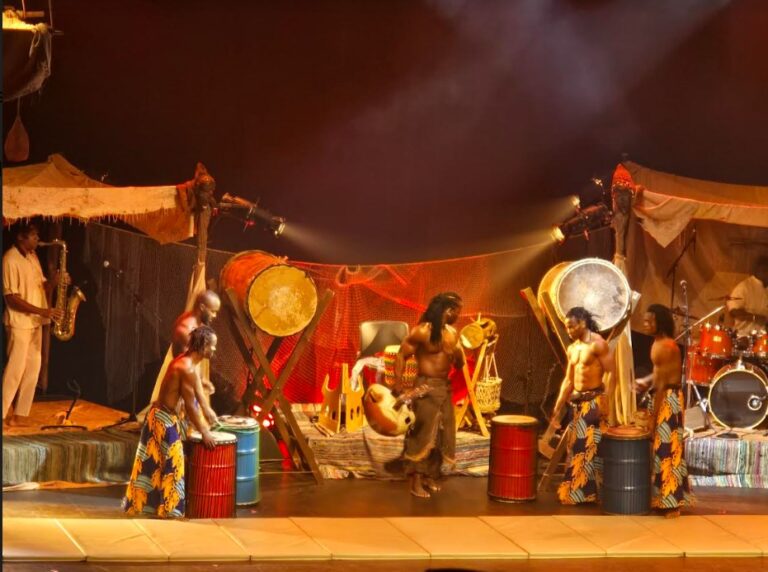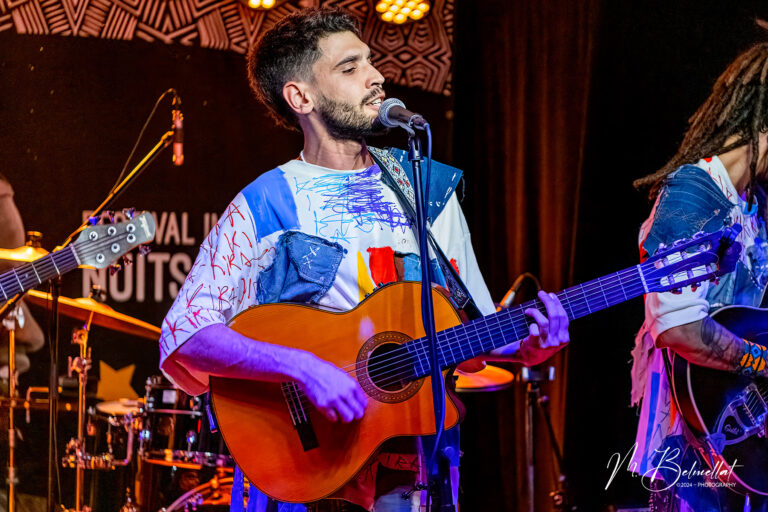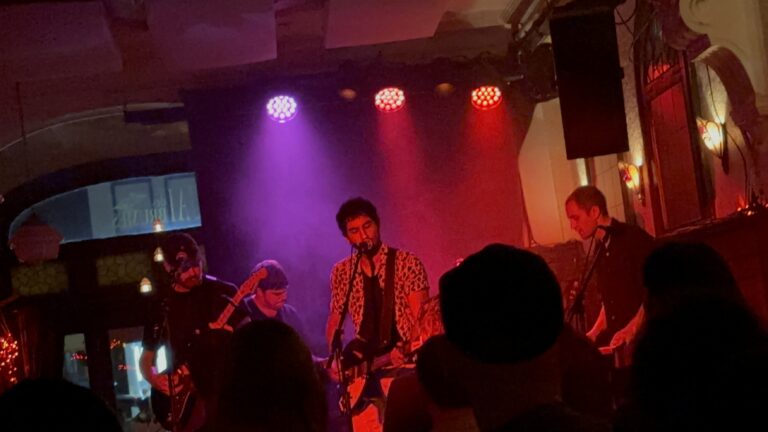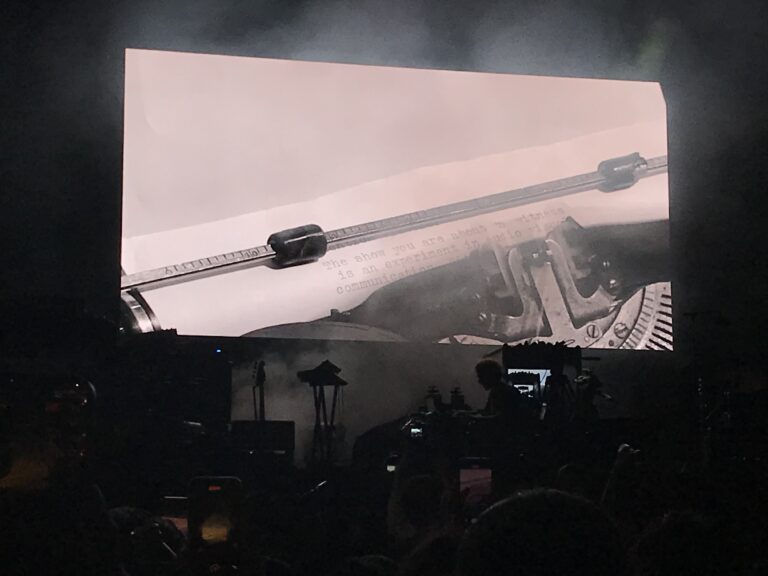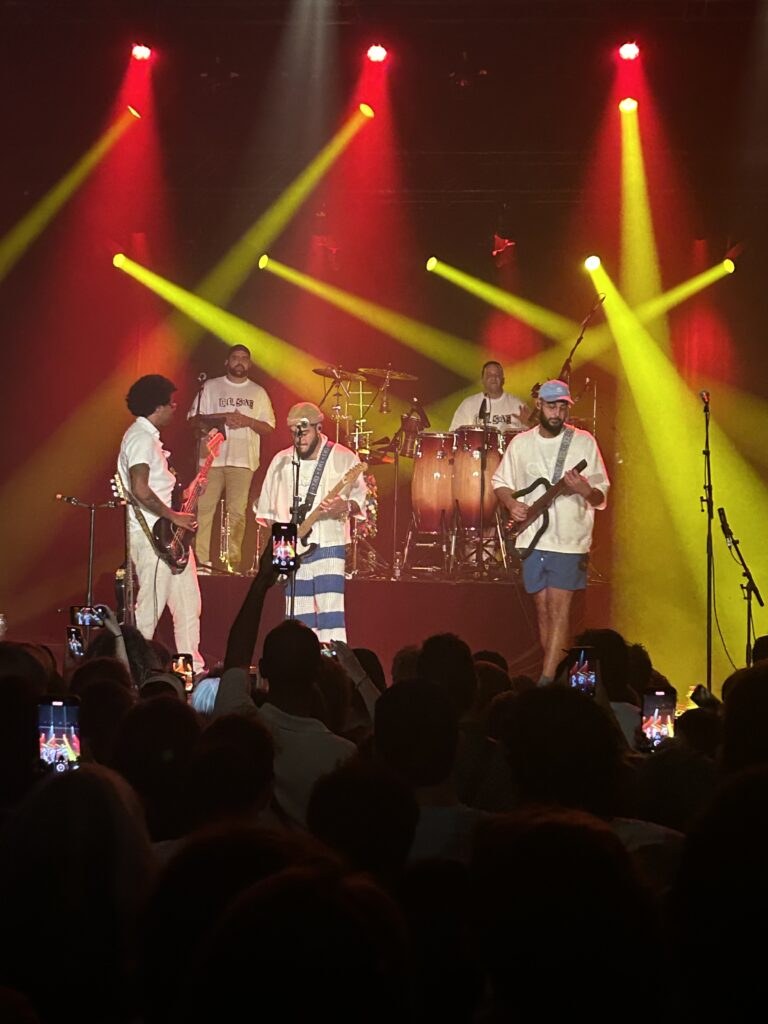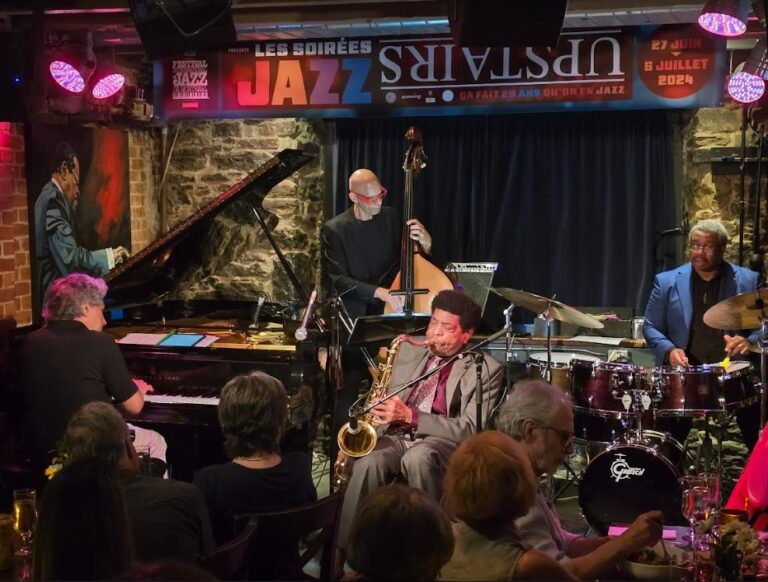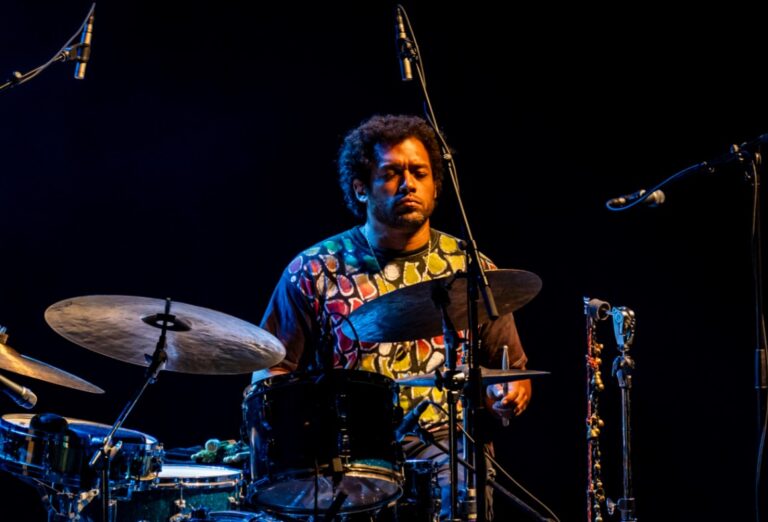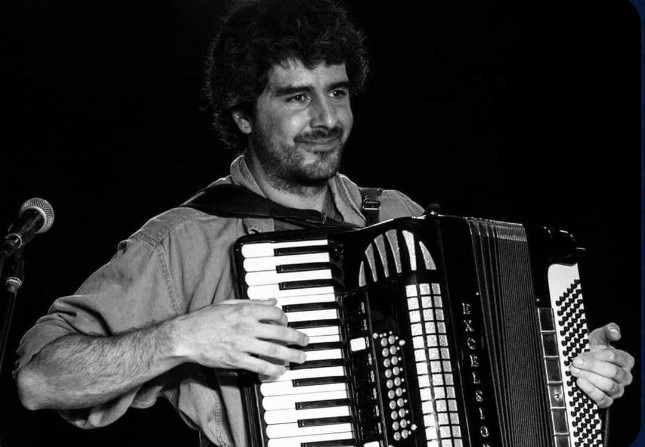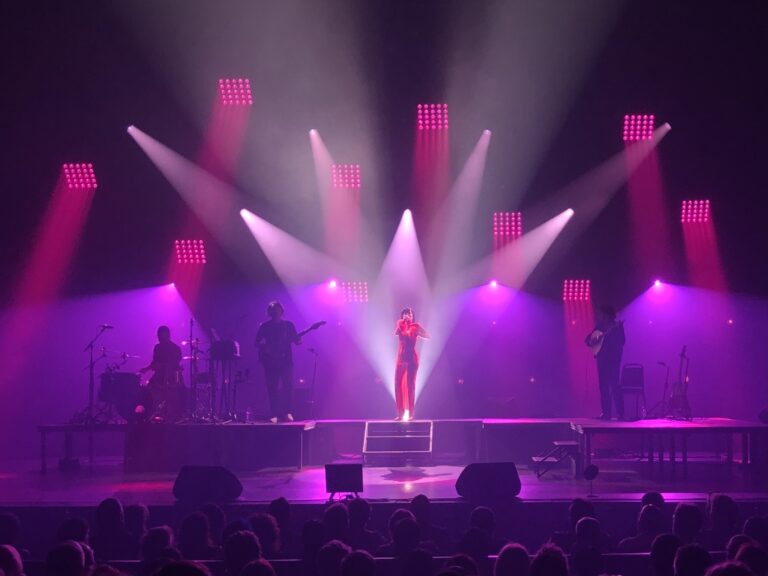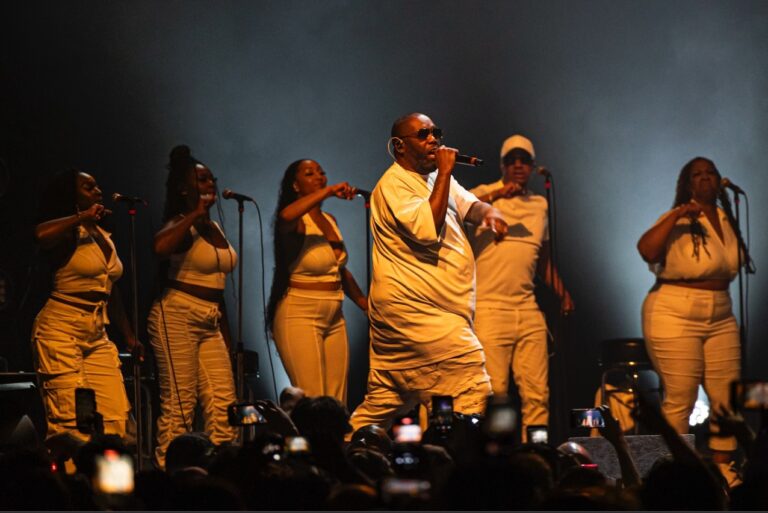The first “big” show of the Nuits d’Afrique 2024, Afrique en Cirque unfolded on Wednesday at Montreal’s Olympia to a full house. There was a big appetite for this Afro-Quebec circus, this time centered on Guinean culture, typical of West Africa.
“I’ve worked for just about every circus in Quebec on the international scene, and I felt there was something missing: African acrobatics. So I wanted to put on a show about my native Guinea,” explains Yamoussa Bangoura, founder of the troupe. A multi-instrumentalist and acrobat, the leader of Kalabanté has delved into the traditional legacy of Guinea, his homeland, to create a series of musical-circus tableaux, spanning some 90 minutes.
Dynamic, impressive, thrilling, entertaining, humorous, festive, martial, athletic, virtuoso. These are just some of the epithets to describe these acrobatic and choreographic maneuvers of high acrobatics. Four men and two women, some of them amazing contortionists, adapt circus arts to African traditions. They reproduce everyday, traditional practices such as fishing, the market and village feasts, not to mention a few nods to Western life, such as this hilarious number by muscular males à la Village People.
Three musicians accompany them (bass, drums, saxophone, effects pedals, etc.), not to mention the ringmaster, who is in fact the main musician (kora, djembé singing and other percussion instruments) as well as being an acrobat and Kalabanté’s artistic director. Based in Montreal for over two decades, Yamoussa Bangoura is well acquainted with some of the world’s most innovative circus practices, far beyond Cirque du Soleil. A seasoned percussionist, he has instilled the practice of percussion in his fellow acrobats, who regularly contribute to pounding large drums whose horizontals are somewhat reminiscent of Japanese kodo.
The musical direction is hybrid, between traditional Mandingo music and modern Western music (funk, a touch of jazz, etc.). Not rocket science if you know these styles, but solidly executed. The most lasting memory of this evening is that the rich culture of West Africa has legitimately appropriated the universal circus.
